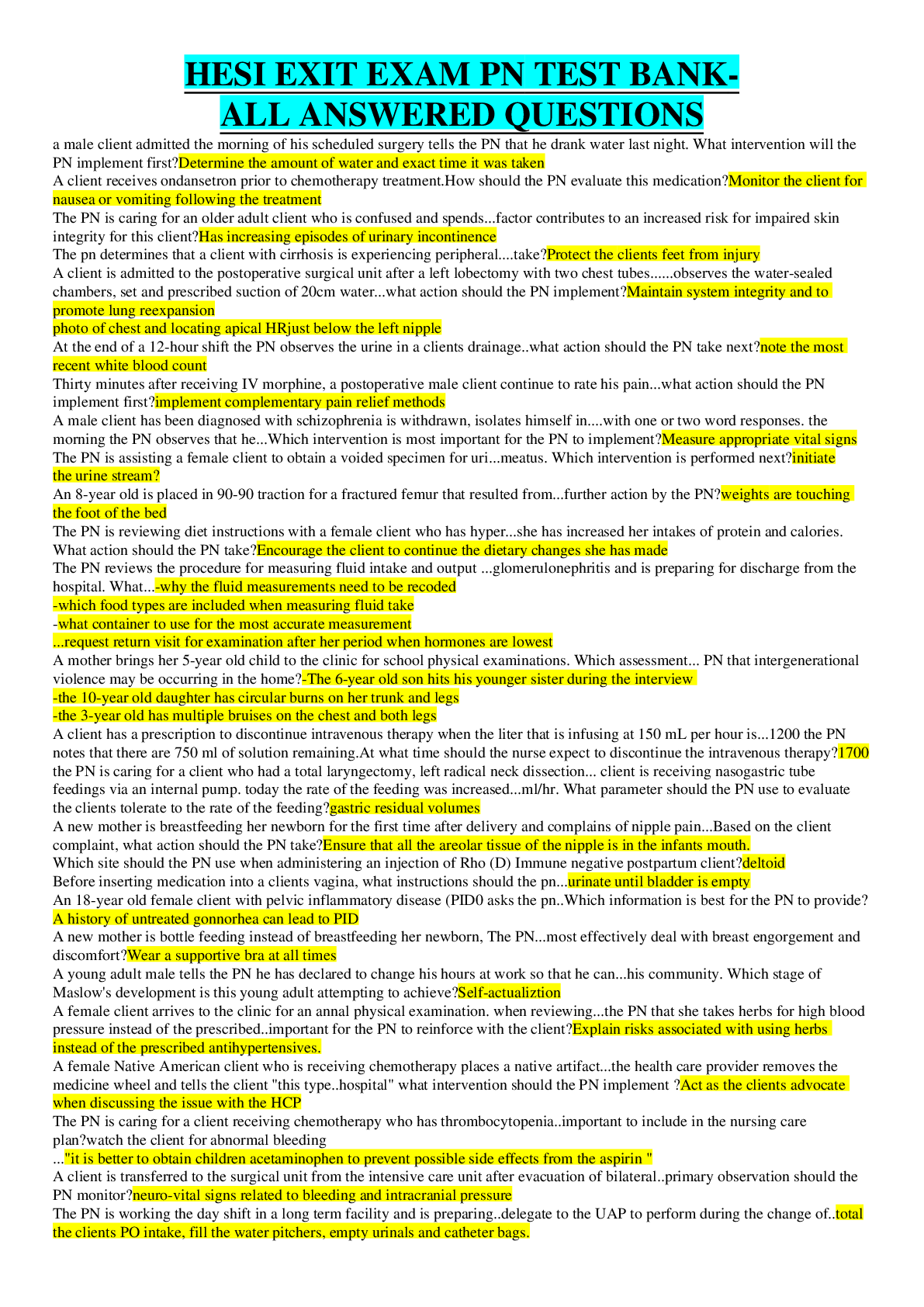HESI A2 Exam V1 With A&P
Document Content and Description Below
HESI A2 VERSION 1 READING COMPEHENSION Doppler Effect Have you ever wondered why the whistle of a traveling, distant locomotive predicts its approach several yards before anyone actually sees it? ... Or why an oncoming ambulance’s screaming siren is heard momentarily several feet before the ambulance comes into full view, before it passes you, and why its siren is still heard faintly well after the ambulance is out of sight? What you are witnessing is a scientific phenomenon known as the Doppler Effect. What takes place is truly remarkable. In both of these instances, when the train or ambulance moves toward the sound waves in front of it, the sound waves are pulled closer together and have a higher frequency. In either instance, the listener positioned in front of the moving object hears a higher pitch. The ambulance and locomotive are progressively moving away from the sound waves behind them, causing the waves to be farther apart and to have a lower frequency. These fastapproaching modes of transportation distance themselves past the listener, who hears a lower pitch. 1. Which statement is not listed as a detail in the passage? A. The oncoming sound waves have a higher pitch because of high frequency and closeness of waves. B. The oncoming sound waves have a higher pitch because of low frequency and closeness of waves. C. The whistling sound of the locomotive as it approaches and passes can be explained by the Doppler effect. D. The high-pitched sound of the ambulance as it approaches and passes can be explained by the Doppler effect. 2. What is the main idea of the passage? A. Trains and ambulances make distinctly loud noises. B. Low-frequency waves make high-pitched sounds. C. High-frequency waves make low-pitched sounds. D. The Doppler Effect explains the rationale for why sound is heard initially more strongly and then faintly after a moving object has passed. 3. What is the meaning of the word phenomenon in the second paragraph? A. Something that is lifeless to the senses B. Something that is nonchalant C. Something that is significant but unusual D. Something that is chemical in origin 4. What is the author’s primary purpose in writing this essay? A. To entertain the reader with information about trains and ambulances B. To inform the reader about avoiding accidents, which involve trains and ambulances C. To inform the reader about how movement affects sound D. To analyze the difference between train and ambulance sounds 5. Which sound waves have a higher pitch? A. Those waves that are closer together B. Those waves that are farther apart C. Those waves that travel a long distance D. Those waves that travel a short distance 6. Which sound waves have a lower pitch? A. Those waves that are closer together B. Those waves that are farther apart C. Those waves that travel a long distance D. Those waves that travel a short distance Electrocardiogram Beep!…Beep!…Beep! is the audible rhythmic sound made as the strength of the heart muscle is measured. The signal cadence has a characteristic record that varies in every individual. This record is called an electrocardiogram, or ECG. In the body, an array of systemic neural responses constantly occur, emitting electric currents. The electric currents can be detected on the surface of the body, and if a person is hooked to an amplifier, these impulses are recorded by an electrocardiograph. Most of the information obtained is about the heart because the heart sends out electric currents in waves. This “wave of excitation” spreads through the heart wall and is accompanied by electric changes. The wave takes place in three distinct steps. Initially, the “wave of excitation” accompanied by an electric change lasts for approximately 1 to 2 seconds after the contraction of the cardiac muscle. The electric impulses are discharged rhythmically from the sinoatrial (SA) node, the pacemaker of the heart. This spread of excitation over the muscle of the atrium indicates that the atrium has contracted. Next, the peak of the ECG reading is due to the atrioventricular (AV) node, causing the ventricle to become excited. Finally, the ventricles relax, and any changes in the wave indicate to trained medical staff any abnormalities within the heart. 7. What is the author’s primary purpose in writing the essay? A. To persuade the reader to have an ECG B. To entertain the reader with a heart-warming story C. To inform the reader how an electrocardiograph reads the electric currents emitted by the heart D. To analyze the difference in the SA node and the AV node 8. Which statement is not listed as a detail within the passage? A. Changes in the ECG are typically used for diagnosis of abnormal cardiac rhythm. B. The signal has a characteristic record called the electrocardiogram. C. The “wave of excitation” starts at the SA node. D. The “wave of excitation” spreads through the heart wall and is accompanied by electric changes. 9. What is the meaning of the word emitting as it is used in the second paragraph? A. Repelling B. Releasing C. Closing D. Charging 10. What is the main idea of the passage? A. Electric currents within the body are due to electrostatic charges set off by the heart. B. The ECG systematically and quickly measures the stages at which the “wave of excitation” occurs within the heart and records them. C. The “wave of excitation” is detected on the surface of the body and is used to measure the atrial excitation of the heart. D. The electric currents within the body are in direct relation to the “wave of excitation” measured by the ECG. 11. What is the best summary of the passage? A. Electric currents within the body are due to electrostatic charges set off by the heart. Medical staff are trained to recognize any abnormalities within the heart. B. Every individual has unique electric currents on the surface of the body. The ECG measures and records these electric currents. C. The ECG systematically and rather quickly measures the stages at which the “wave of excitation” occurs within the heart and records them. This wave has three distinct steps that spread from the SA node to the AV node. D. The ECG measures the electric currents within the body. These currents are detected on the surface of the body when the body is connected to an amplifier. 12. What are the three steps of the “wave of excitation”? A. The discharge from the SA node, the peak ECG, and the excitement of the ventricle. B. The excitement of the ventricle, the relaxing of the ventricle, and the systemic neural response. C. The contraction of the atrium, the relaxation of the atrium, and the contraction of the ventricle. D. The excitation of the atrium, the excitement of the ventricle, and the relaxing of the [Show More]
Last updated: 1 year ago
Preview 1 out of 60 pages
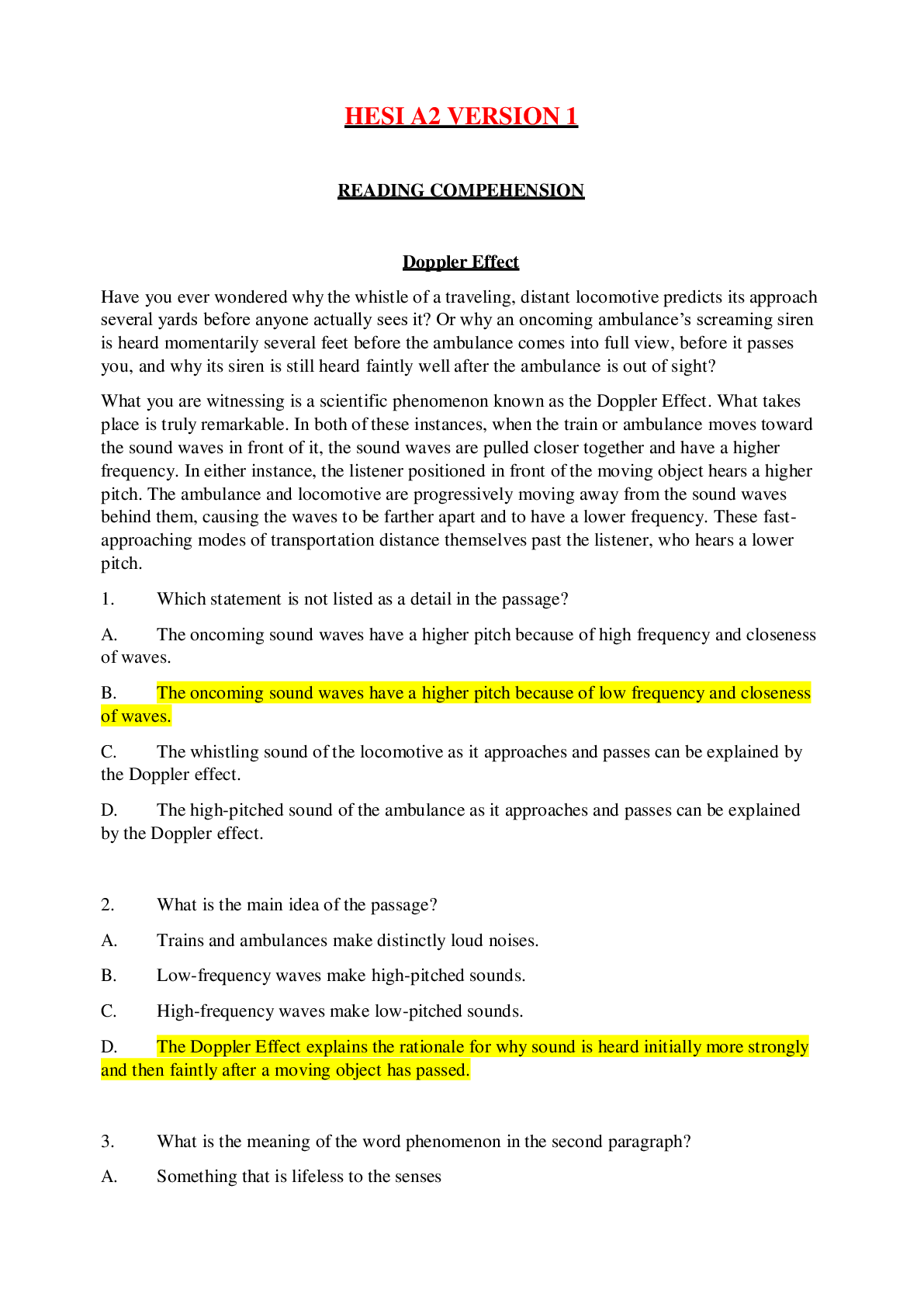
Reviews( 0 )
Document information
Connected school, study & course
About the document
Uploaded On
Jul 21, 2022
Number of pages
60
Written in
Additional information
This document has been written for:
Uploaded
Jul 21, 2022
Downloads
0
Views
113







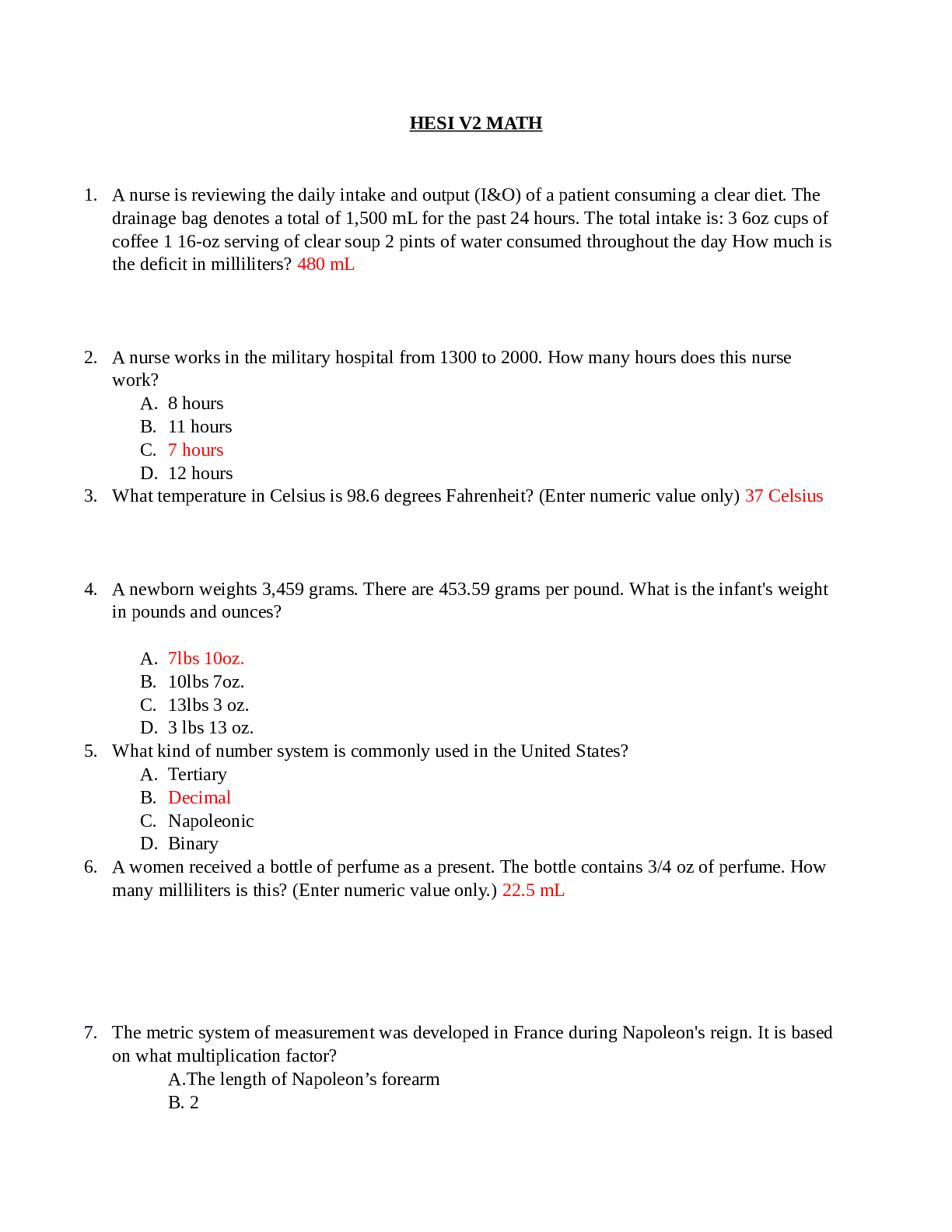



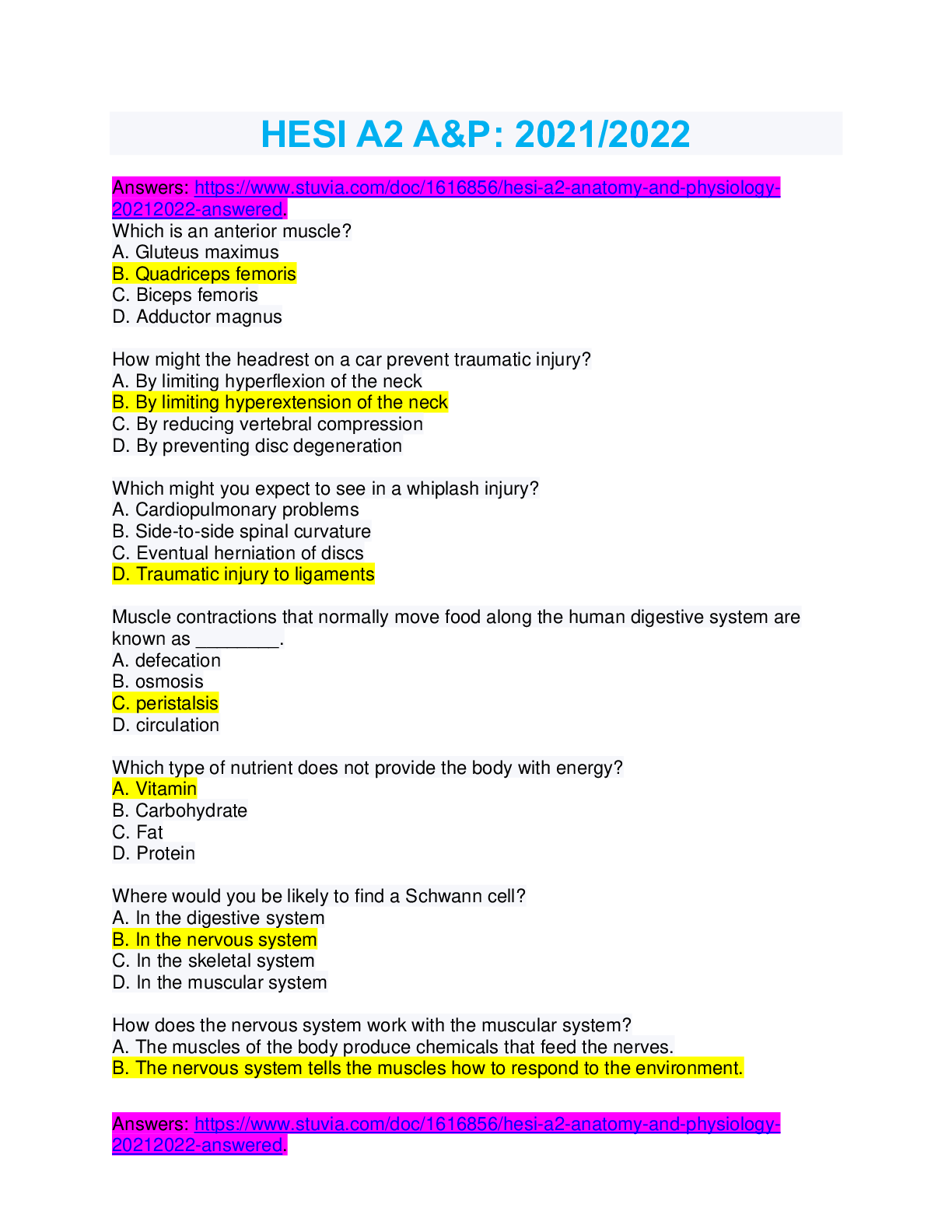



_merged.png)
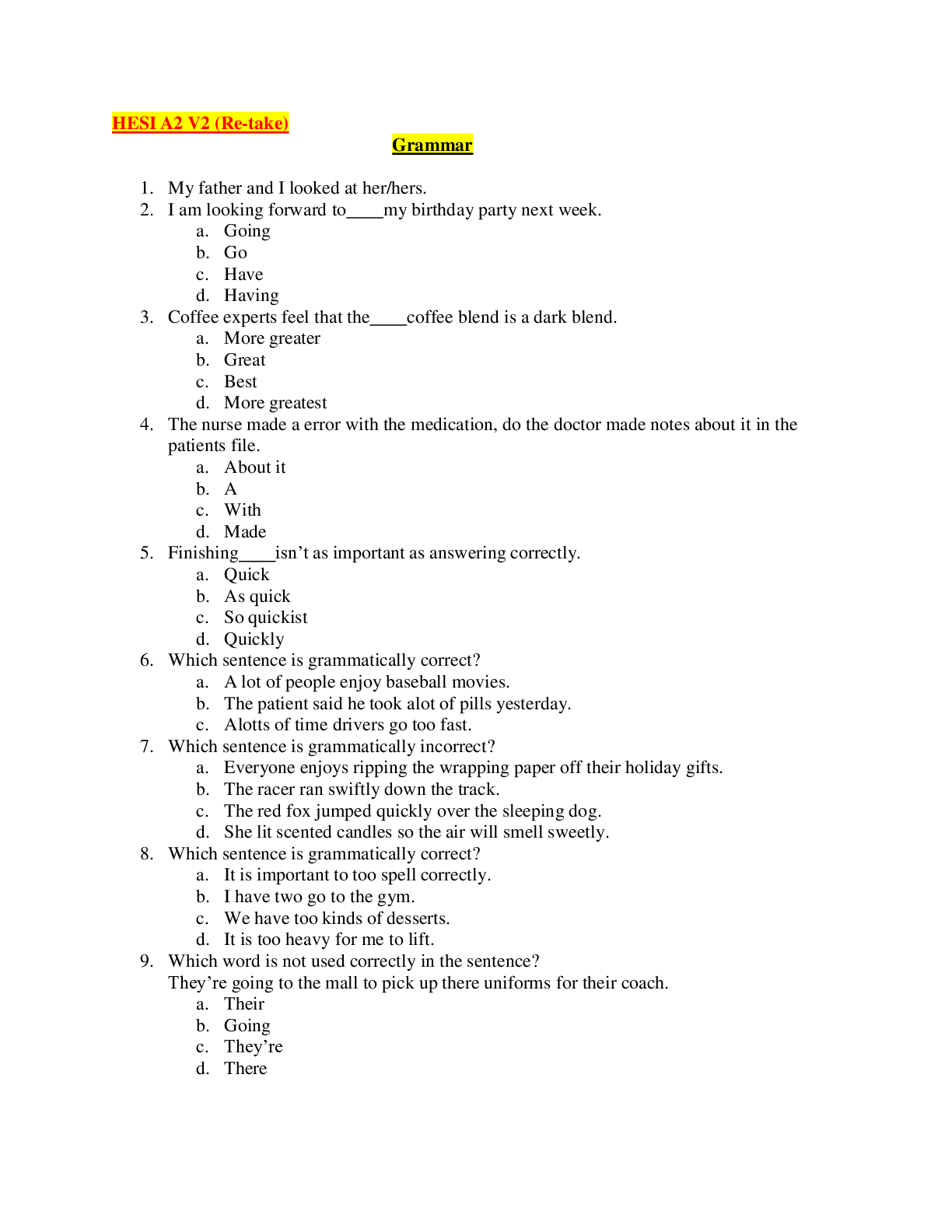





 (1).png)



